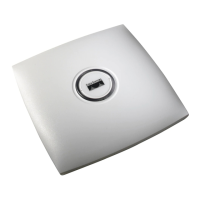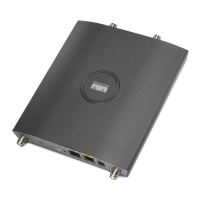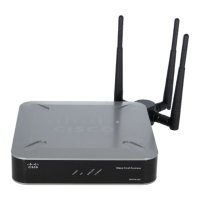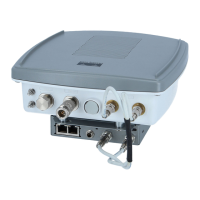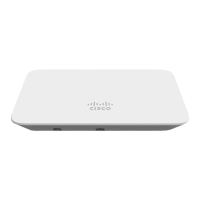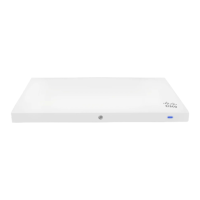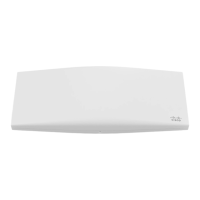The following message appears;
Warning! Changing backhaul slot will bring down the mesh for renegotiation!!!
After backhaul is changed, 5 GHz client access channels need to be changed manually
Are you sure you want to continue? (y/N)
Press y.
When you change the 5-GHz backhaul to local client access, the 5-GHz client access frequencies on all the APs
are the same, because the backhaul frequency is ported on these 5-GHz radios for client access. You need to
configure these channels for a better frequency planning.
Note
Step 2
To change the backhaul from 2.4 GHz to 5 GHz, enter the following command:
(Cisco Controller) > config mesh backhaul slot 1 enable RAP
The following message appears:
Warning! Changing backhaul slot will bring down the mesh for renegotiation!!!
Are you sure you want to continue? (y/N)
Press y.
You cannot configure the 2.4-GHz backhaul using the controller GUI, but you can configure the 2.4-GHz
backhaul using the CLI.
Note
Step 3
To verify the current backhaul in use, enter the following command:
(Cisco Controller) > show mesh backhaul AP_name
For a 5-GHz backhaul, dynamic frequency selection (DFS) occurs only on 5 GHz and not on 2.4 GHz. The
mechanism, which differs for RAP and MAP, is called a coordinated change mechanism. When 5 GHz is
converted to client access from the backhaul or 2.4 GHz is being used as backhaul, DFS works similar to how
it works for a local mode AP. DFS is detected on a 5-GHz client access, and the request is sent to the controller
for a new channel. Mesh adjacency is not affected for the 2.4-GHz backhaul.
Note
Universal client access is available on the 2.4-GHz
backhaul.
Note
Configuring Ethernet VLAN Tagging
Ethernet VLAN tagging allows specific application traffic to be segmented within a wireless mesh network
and then forwarded (bridged) to a wired LAN (access mode) or bridged to another wireless mesh network
(trunk mode).
A typical public safety access application that uses Ethernet VLAN tagging is the placement of video
surveillance cameras at various outdoor locations within a city. Each of these video cameras has a wired
Cisco Mesh Access Points, Design and Deployment Guide, Release 7.3
OL-27593-01 151
Connecting the Cisco 1500 Series Mesh Access Points to the Network
Configuring Ethernet VLAN Tagging
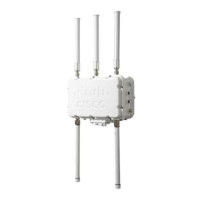
